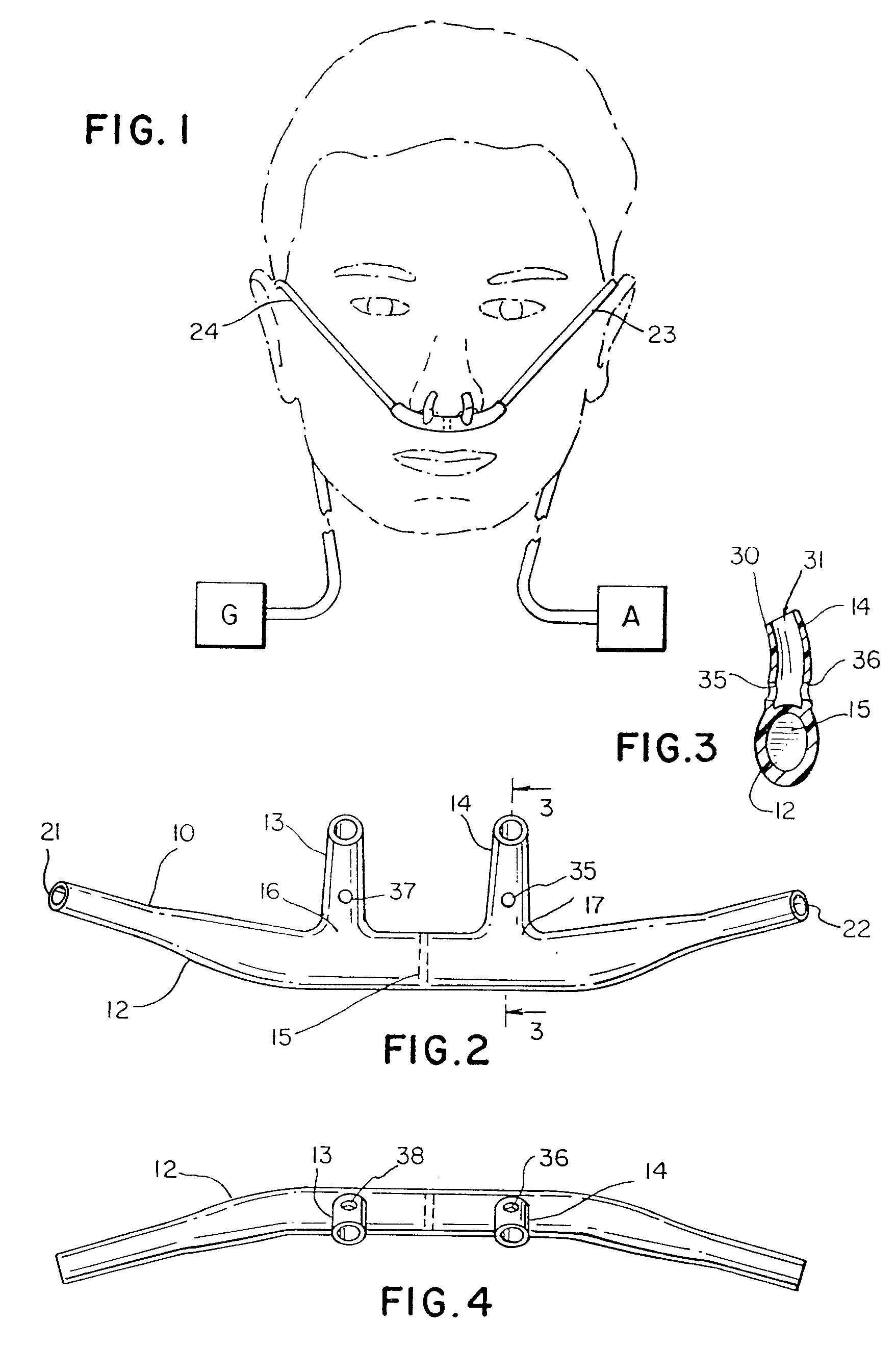Nasal cannula
a cannula and a technology of cannulas, applied in the direction of valves, respirators, mechanical equipment, etc., can solve the problems of increasing the risk of gas mixing, vexing problems, and affecting the reading of end-tidal carbon dioxide, so as to reduce or eliminate the incidence of occlusion
- Summary
- Abstract
- Description
- Claims
- Application Information
AI Technical Summary
Benefits of technology
Problems solved by technology
Method used
Image
Examples
Embodiment Construction
The nasal cannula 10 of one embodiment of the present invention consists of a generally tubular face piece 12 having two nares 13 and 14 and a septum 15 disposed in the center of the face piece 12 between the openings 16 and 17, respectively, of the nares 13 and 14 (see FIGS. 2, 3 and 4). The openings 21 and 22 on the ends of the face piece 12 are affixed to separate tubes 23 and 24 as shown in FIG. 1, which are separately connected to a source of insufflating gas (G), such as oxygen, and a commercial carbon dioxide monitoring unit (shown as A) which, in turn, has or is connected to a vacuum pump or other means for drawing exhaled breath containing carbon dioxide into an instrument that is capable of measuring the concentration of the carbon dioxide in the sampled gas.
During use of the cannula for both insufflation and the monitoring of carbon dioxide concentration in the exhaled breath (depicted schematically in FIG. 1), the readings for end-tidal carbon dioxide can become distorte...
PUM
 Login to View More
Login to View More Abstract
Description
Claims
Application Information
 Login to View More
Login to View More - R&D
- Intellectual Property
- Life Sciences
- Materials
- Tech Scout
- Unparalleled Data Quality
- Higher Quality Content
- 60% Fewer Hallucinations
Browse by: Latest US Patents, China's latest patents, Technical Efficacy Thesaurus, Application Domain, Technology Topic, Popular Technical Reports.
© 2025 PatSnap. All rights reserved.Legal|Privacy policy|Modern Slavery Act Transparency Statement|Sitemap|About US| Contact US: help@patsnap.com


